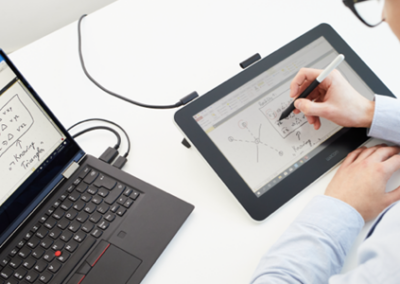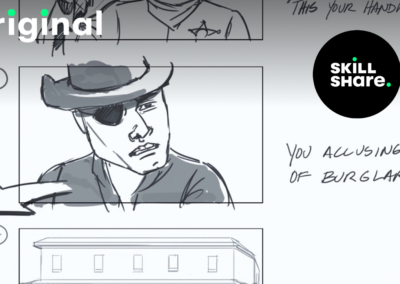When it comes to digital art, there is a lot of hardware and software out there to help us bring some more creativity into our world. And while the time passes, the count of options to choose from increases and the choice gets harder. Quite often, hardware is bundled with software, to help young aspirational artists get started. But also experienced digital artists profit from these bundles once they wish to upgrade. One of the top software programs offered with our Intuos family is the Clip Studio Paint Pro software.
We actually had already dived into this software from Celsys in the past. Now it’s time for a recap. We want to give you one article with all the info you need to get started with the Clip Studio Paint Pro from a beginners level up to proficient user. Feel free to share this information with colleagues and friends, who are eager to dig into digital art as well.
Part 1: First steps with Clip Studio Paint Pro and Wacom Intuos
Congratulations – you got a Wacom Intuos, how great is that? Now you wonder, how you get started? Here are some useful tutorials, that help you get started. For further information on for example brushes, you may also want to take a closer look into the original post on how to get started with Clip Studio Paint Pro and Wacom Intuos.
Click here to open the four steps of getting started.
Step 1:
how to connect your tablet
Step 2:
download the software
.
Step 3:
install the software
Step 4:
tablet basics and settings
Part 2: How to create an illustration with Clip Studio Paint Pro
So far, we have connected our pen tablet, we downloaded and installed the software and we even applied some basic settings according to our needs. Now it’s about time to get familiar with Clip Studio Paint Pro.
Just click here to watch these easy-to-follow tutorials on how to start creating an illustration.
Step 1:
create a new canvas and sketch first draft
Step 2:
change brush settings for inking
Step 3:
coloring basics (anime style)
Step 3 variation:
coloring – mat
Step 3 variation:
coloring – watercolor
In case you need more information, please visit our in depth post on the second part: creating an illustration with Clip Studio Paint Pro.
Part 3: How to draw a manga comic with Clip Studio Paint Pro and Wacom Intuos
You already know the first few basic steps if you followed the videos up until here. When it comes to drawing manga comics, the following “lesson” breaks it down into 12 different process steps. Just watch the tutorials and visit our in depth blog post on how to draw manga comics with Clip Studio Paint Pro for further information.
Click here to open the extensive step-by-step tutorial panel.
Step 1:
creating a new canvas, resolution and layers
Step 2:
draw a rough draft of your comic
Step 3:
add speech balloons and text
Step 4:
use pencil tool for inking drafts
Step 5:
add frame borders to your comic
Step 6:
add inking & speech bubbles
Step 7.1:
add background with perspective ruler
Step 7.2:
add background with photo & 3D data
Step 8:
add text (such as sounds etc.)
Step 9:
learn about and add effect lines
Step 10:
add tones & patterns with decoration brushes
Step 11:
tone patterns, finish and export
Step 12:
add some color if you wish
Part 4: tips for creating a monochrome manga for print with Clip Studio Paint and Wacom
In case you have not yet created artwork for print yet, you will find this video useful. You will learn about different borders to take into account when creating artworks for print. You would not want any of your precious detail get cut off, just because you did not know about the difference between web and print artwork. So go ahead and watch this very informative video.
Tipps & tricks:
learn about borders and keep them in mind
Part 5: useful features with Clip Studio Paint and Wacom Intuos
Explanatory text
Click to see 5 videos on useful Clip Studio Paint Pro features.
Feature 1:
import traditional drawings and extract lines
Fearure 2:
get accustomed to different rulers
Feature 3:
drawing figures easily in 3D
Feature 4:
drawing with vectors
Feature 5:
browse and download assets from the Clip Studio Assets service
These useful resources have been brought to you by Caterina Rocchi, the principal of the Lucca Manga School in Italy. Just follow her on social media:
Facebook
Instagram





